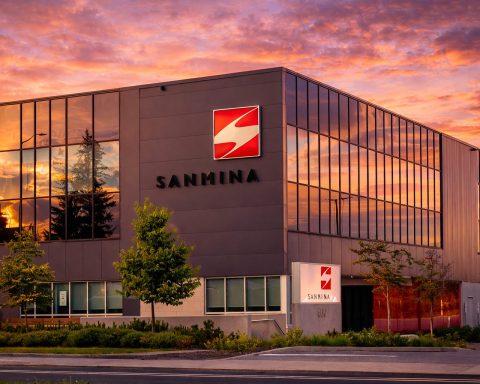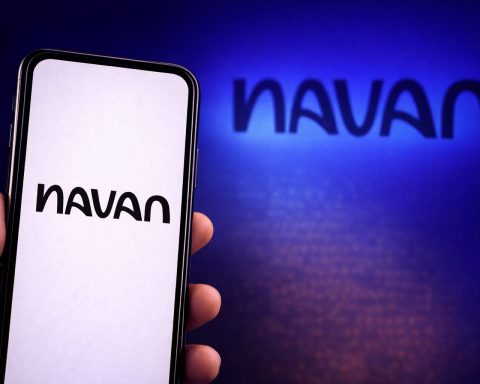Updated November 25, 2025
D‑Wave Quantum’s QBTS stock is taking a breather today after one of the wildest runs of any quantum computing name in 2025. At the same time, a brand‑new ETF tied directly to QBTS has launched, adding a fresh layer of complexity to an already volatile story.
QBTS stock today: price, volume and volatility
As of early afternoon trading on November 25, 2025, QBTS stock is changing hands around $22.08, down about 4.5% on the day, after closing Monday at $23.11. Intraday, shares have traded between $21.55 and $22.91, with volume around 14.7 million shares, well above many small‑cap tech names. At that price, D‑Wave carries a market cap of roughly $7.7 billion and a 52‑week range of $2.50 to $46.75. [1]
Even after today’s pullback, QBTS is still up roughly 780% from its 52‑week low and sits about 53% below its recent high, underscoring just how extreme the swings have become.
Wall Street analysts remain aggressively bullish on the name: according to data compiled by StockAnalysis, 11 analysts rate QBTS a “Strong Buy” with a consensus 12‑month price target of $27.36, implying about 24% upside versus today’s quote. [2] That optimism, however, is running head‑on into concerns about valuation, insider selling and sector froth.
Why QBTS became one of 2025’s hottest stocks
Quantum computing has been one of 2025’s most speculative themes, and D‑Wave Quantum (QBTS) is at the center of that story.
A recent Nasdaq‑hosted article from The Motley Fool noted that over the trailing year through November 19, D‑Wave shares had surged roughly 1,530%, outpacing both its quantum peers and the tech‑heavy Nasdaq Composite. [3]
Several forces have fueled that move:
- Hype around quantum computing’s long‑term potential. Boston Consulting Group estimates quantum technologies could add $450–$850 billion to the global economy by 2040, while industry outlet The Quantum Insider has floated scenarios approaching $1 trillion by 2035. [4]
- High‑profile partnerships and pilots across finance, logistics, manufacturing and government, as large enterprises experiment with quantum and hybrid quantum‑classical workflows.
- A broader “search for the next AI winner”, pushing investors toward earlier‑stage, high‑beta names like D‑Wave, IonQ and Rigetti.
That backdrop set the stage for D‑Wave’s recent fundamental news — and today’s cooling‑off move.
Fresh catalysts: European €10M deal, warrant cash and a brand‑new QBTS ETF
1. €10 million European Advantage2 deal
In mid‑October, D‑Wave announced a €10 million multi‑year agreement with Swiss Quantum Technology SA (SQT) to deploy its Advantage2 annealing quantum computer in Europe. [5]
Key details:
- The system will support Italy’s new “Q‑Alliance” quantum initiative and a state‑of‑the‑art research facility.
- The contract includes an option for SQT to purchase the system outright.
- The installed Advantage2 system features more than 4,400 qubits and is designed for energy‑efficient optimization workloads, accessible via D‑Wave’s Leap cloud service. [6]
This deal both expands D‑Wave’s European footprint and demonstrates real‑money demand for its annealing‑focused systems, rather than just proof‑of‑concept experiments.
2. Warrant redemption raises $54.6 million and removes an overhang
On November 21, D‑Wave reported that it had completed the redemption of all outstanding public warrants to purchase QBTS shares. [7]
Highlights from the transaction:
- 4,746,358 warrants were exercised, resulting in about 6.9 million new common shares issued at $11.50 per share, bringing in approximately $54.6 million in cash.
- 270,820 warrants remained unexercised and were redeemed for $0.01 each, after which no public warrants remain outstanding.
- The warrants have stopped trading and will be delisted, leaving only the common stock on the NYSE under the symbol QBTS. [8]
For investors, that means:
- Extra balance‑sheet cash to fund R&D, sales expansion and infrastructure.
- Removal of a dilutive overhang, since future warrant exercises are now off the table.
- But also recent dilution, as millions of new shares have already been issued.
3. New GraniteShares YieldBOOST QBTS ETF (QBY) launches today
Adding a brand‑new twist, GraniteShares today rolled out a pair of YieldBOOST ETFs tied to quantum computing, including one built directly around D‑Wave: the GraniteShares YieldBoost QBTS ETF (ticker: QBY). [9]
According to GraniteShares:
- The fund is designed to generate income by selling options on a 2x leveraged ETF that tracks QBTS, targeting 200% of the options premium collected on that leveraged vehicle.
- QBY’s secondary objective is to gain capped upside exposure to that leveraged ETF’s daily performance. [10]
Practically, this means:
- More derivative activity tied to QBTS, which can amplify intraday moves as market makers hedge options exposure.
- Another on‑ramp for income‑seeking traders who want exposure to D‑Wave’s volatility without directly buying the underlying stock.
- Yet another lever that can increase complexity and risk around short‑term price behavior.
With QBY officially live today on Nasdaq, QBTS now sits not just at the center of the quantum story, but also at the center of a new options‑driven ETF product line.
Q3 2025 results: revenue doubles, but losses stay heavy
The fundamental backdrop for all this excitement is D‑Wave’s third‑quarter fiscal 2025 earnings, released on November 6.
According to the company:
- Revenue came in at $3.7 million, up 100% year‑over‑year and about 8% sequentially from Q2’s $3.1 million. [11]
- D‑Wave reported more than 100 revenue‑generating customers over the last four quarters, including nearly two dozen Forbes Global 2000 companies. [12]
- GAAP gross margin jumped to 71.4%, up from 55.8% a year ago, thanks in part to upgrading a major system at Germany’s Jülich Supercomputing Centre to an Advantage2‑class processor. [13]
- Subsequent to quarter‑end, the company says it has closed more than $12 million in additional bookings, highlighting strong demand momentum. [14]
However, the growth comes at a steep cost:
- GAAP operating expenses climbed to $30.4 million, up 40% year‑over‑year, driven by higher personnel, fabrication and stock‑based compensation costs. [15]
- Net loss for Q3 totaled $140 million, much worse than the prior‑year loss of $22.7 million. The bulk of this was tied to non‑cash warrant‑related charges as D‑Wave’s share price spiked, rather than core operations. [16]
On a trailing 12‑month basis, StockAnalysis estimates that D‑Wave has generated about $24.1 million in revenue but posted roughly $398.8 million in net losses, meaning losses were more than 16 times sales. [17]
At today’s valuation of about $7.7 billion, that translates into a price‑to‑sales multiple above 300x, an extraordinarily rich valuation even for a fast‑growing, early‑stage tech company.
Business model and technology in brief
D‑Wave’s differentiation in the quantum race comes from its focus on annealing‑based quantum computers and hybrid quantum‑classical solvers tuned for optimization problems — things like routing, scheduling, logistics and resource allocation.
The company currently offers: [18]
- Advantage & Advantage2 systems: large‑scale annealing quantum processors, now including a 4,400+‑qubit Advantage2 system.
- Leap cloud service: real‑time cloud access to its quantum hardware and hybrid solvers.
- Ocean software tools and SDKs to help developers build and test quantum workflows.
- Professional services and “Launch” programs to help enterprises move from pilots into production‑grade applications.
This “practical quantum” positioning — focused on real‑world optimization today, rather than purely long‑term gate‑model research — is a big part of the bull case for QBTS stock.
Key risks around QBTS stock: valuation, competition and insider selling
Despite the excitement, recent coverage has highlighted several meaningful risks for QBTS investors.
1. Extreme valuation and sector froth
The Nasdaq‑hosted Motley Fool piece on quantum stocks notes that pure‑play quantum names including D‑Wave, IonQ and Rigetti have delivered gains between 90% and 1,860% over the past year, far outpacing the broader market. [19]
The article argues that:
- Quantum stocks trade at “astronomical” price‑to‑sales multiples, making them especially vulnerable if growth slows or sentiment fades.
- The largest risk may come from deep‑pocketed tech giants — companies like Amazon and Microsoft — which are integrating quantum capabilities into their own cloud platforms and could ultimately capture a large share of the value chain. [20]
In other words, even if quantum computing succeeds, the eventual winners may not be today’s small pure plays.
2. Persistent losses and cash burn
A 24/7 Wall St. analysis framed D‑Wave’s Q3 as “doubling revenue but burning through $140 million chasing growth,” capturing the tension between robust top‑line momentum and heavy expense growth. [21]
While the warrant redemption has injected more than $54 million in cash, D‑Wave is still a company that:
- Relies heavily on external capital to fund R&D and commercial expansion.
- Faces uncertain timing for profitability, given the early stage of the quantum market.
3. Insider selling by the CFO
Adding to investor unease, Chief Financial Officer John M. Markovich recently exercised 200,000 options and immediately sold the resulting shares, a transaction valued at roughly $4.6 million based on the weighted average sale price of about $22.94. [22]
Motley Fool writers have flagged this as a potential “red flag” for shareholders, especially coming so soon after the stock’s parabolic rise. That said:
- Option exercises and sales can be routine diversification or tax‑planning moves.
- The sale does not, by itself, prove anything about the company’s future — but in a momentum‑driven story, it can weigh on sentiment.
4. High short interest and volatility
StockTitan data shows that short interest in QBTS is around 19% of the free float, a very elevated level that underscores both skepticism and the possibility of sharp short squeezes. [23]
Combined with the new QBY options‑writing ETF, this creates a market structure where both downside accelerations and sudden melt‑ups are possible, depending on news flow and hedging dynamics.
QBTS stock outlook: what to watch next
For readers following QBTS stock today and over the coming weeks, several signposts stand out:
- Execution on signed deals and bookings
Investors will want to see the €10M SQT contract and other bookings translate into recurring, higher‑margin revenue, not just one‑off hardware sales. Progress in Europe, the U.S. public sector and large industrial deployments will be key. [24] - Path toward more efficient growth
With net losses still dramatically outpacing revenue, the next few quarters will be watched for signs that D‑Wave can scale revenue faster than operating expenses, even if GAAP profitability remains years away. [25] - Impact of QBY and derivatives activity
The GraniteShares YieldBoost QBTS ETF (QBY) could support liquidity in QBTS — but it also introduces new flows and hedging behaviors that may exaggerate volatility in both directions, especially around news and earnings dates. [26] - Sector sentiment and competition from Big Tech
Quantum computing stocks have already been through multiple boom‑and‑bust cycles, often triggered by comments from high‑profile tech leaders and shifts in macro risk appetite. Future moves by Amazon, Microsoft, IBM, Nvidia and others to deepen their quantum investments — or to downplay them — could have outsized effects on QBTS. [27] - Insider activity and short‑interest trends
Additional insider sales or purchases, changes in short interest and any new capital raises will be closely monitored for hints about how insiders and sophisticated traders view risk–reward from here. [28]
Bottom line
On November 25, 2025, QBTS stock is in “cool‑down” mode, trading lower on the day but still reflecting a staggering run over the last year. The story combines:
- Real business progress — doubling revenue, expanding gross margins, landing a marquee €10M European contract, and raising fresh cash via warrant exercises. [29]
- Aggressive expectations and valuation, with QBTS changing hands at well over 300x trailing sales even as losses remain sizable. [30]
- New market‑structure wrinkles, as the QBY YieldBOOST ETF begins trading and a high short‑interest base jockeys with momentum traders. [31]
For risk‑tolerant investors, D‑Wave remains one of the purest ways to bet on commercial quantum computing and hybrid quantum‑AI workloads. For more cautious market participants, today’s pullback is a reminder that parabolic quantum stocks can move sharply both up and down, and that fundamentals, cash burn and competitive dynamics still matter.
Disclaimer: This article is for informational and educational purposes only and does not constitute financial, investment or trading advice. Always do your own research and consider speaking with a licensed financial adviser before making investment decisions.
References
1. stockanalysis.com, 2. stockanalysis.com, 3. www.nasdaq.com, 4. www.nasdaq.com, 5. www.dwavequantum.com, 6. www.dwavequantum.com, 7. www.dwavequantum.com, 8. www.dwavequantum.com, 9. www.globenewswire.com, 10. graniteshares.com, 11. www.dwavequantum.com, 12. www.dwavequantum.com, 13. www.dwavequantum.com, 14. www.dwavequantum.com, 15. www.dwavequantum.com, 16. www.dwavequantum.com, 17. stockanalysis.com, 18. stockanalysis.com, 19. www.nasdaq.com, 20. www.nasdaq.com, 21. 247wallst.com, 22. www.sharewise.com, 23. www.stocktitan.net, 24. www.dwavequantum.com, 25. stockanalysis.com, 26. www.globenewswire.com, 27. www.nasdaq.com, 28. www.stocktitan.net, 29. www.dwavequantum.com, 30. stockanalysis.com, 31. www.globenewswire.com







